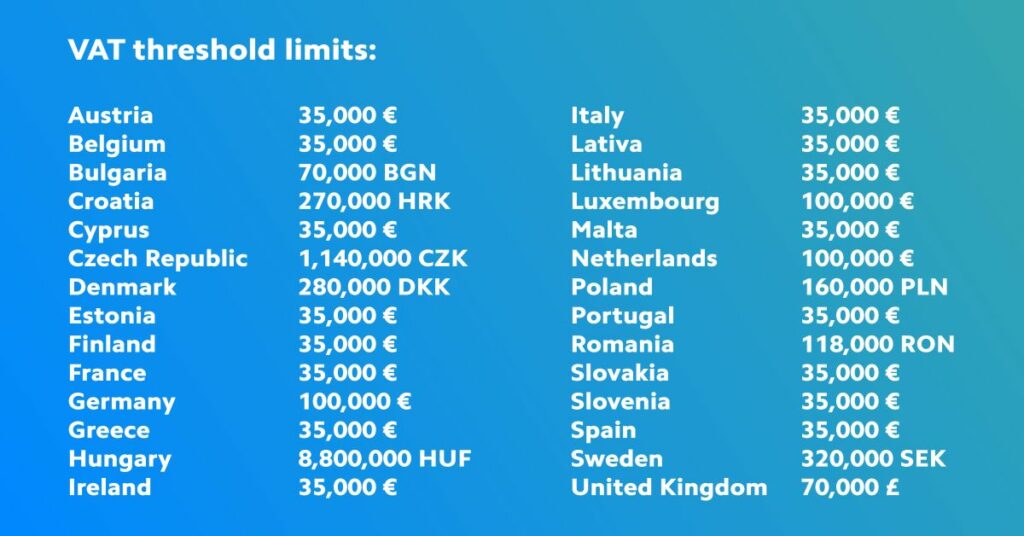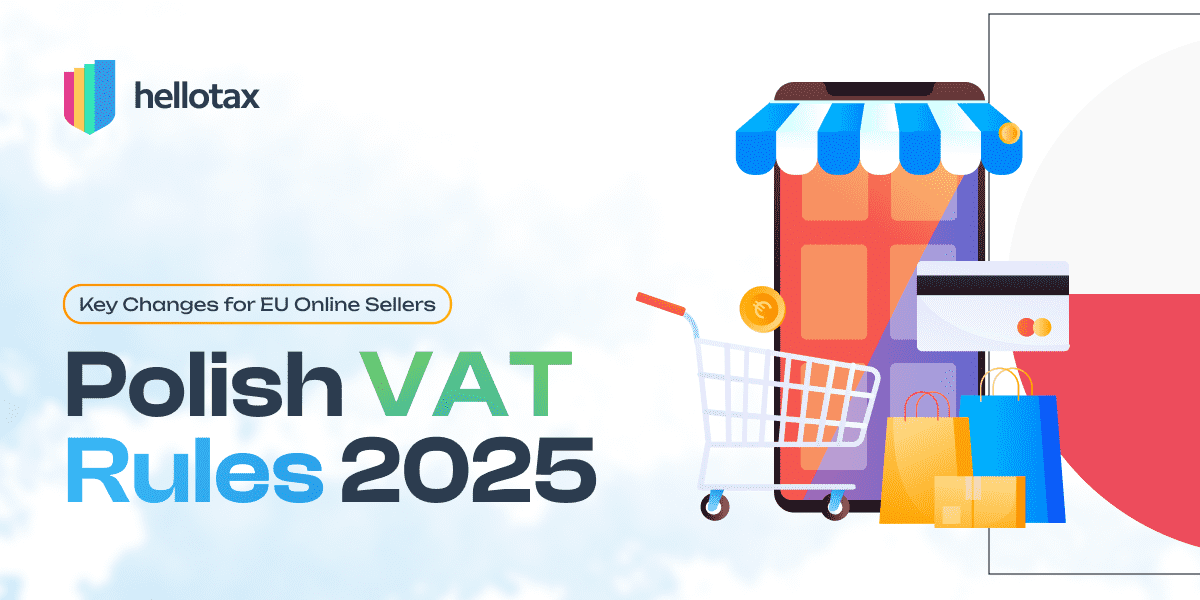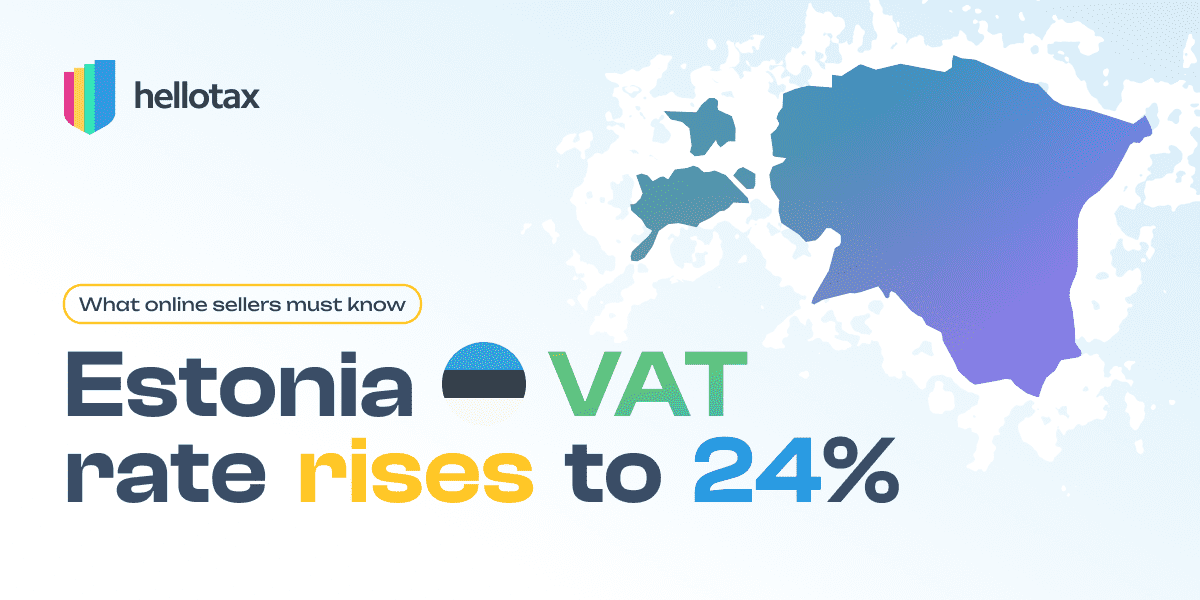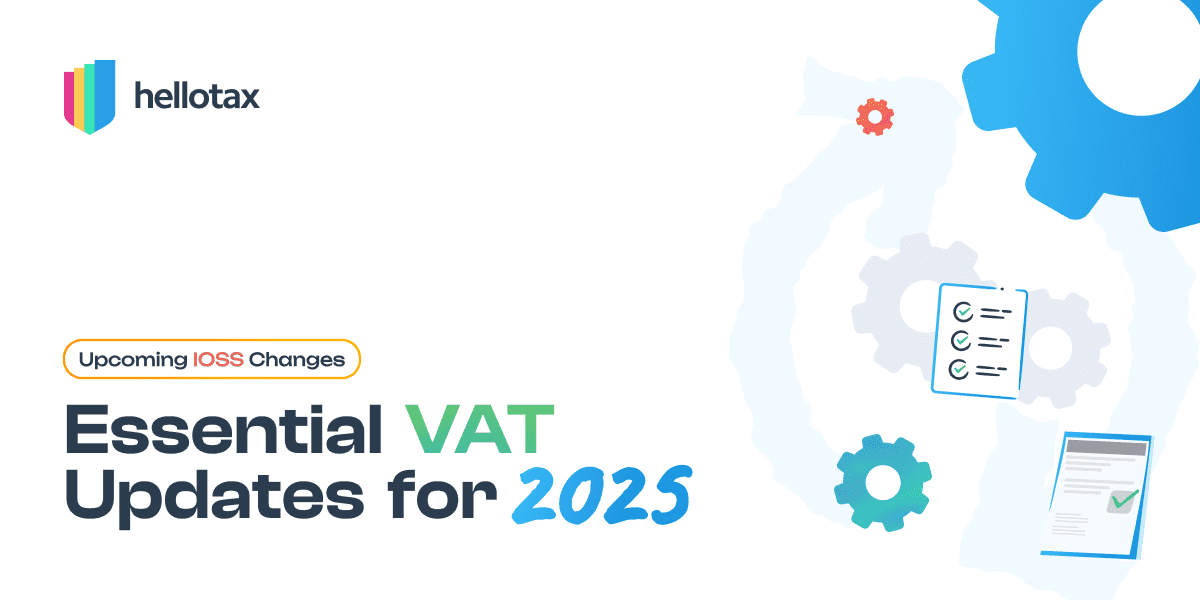Distance selling through platforms like Amazon has grown significantly, and this expansion comes with specific VAT obligations for sellers, especially due to updated EU regulations. Find out all you need to know about Distance Selling Regulations in this article.
Antonia Klatt
Last Updated on 31 January 2022
What is Distance Selling?
Distance Selling means sales that are purchased not face-to-face but mostly sold online via online mail order services.
As you might know, VAT registrations are necessary either when you set up a business, store your goods in a European warehouse, or when you exceed the EU-wide annual threshold for cross-border B2C sales (€10,000 across all EU countries).

Book a free consultation
Our VAT experts are happy to help you. Book a free consultation today!
Online sellers who are selling from country A to country B (both countries are part of the EU) need to make a VAT registration in country B when this country’s VAT threshold limit for distance selling is reached.
Example: Annual limit reached
A French online seller, VAT-registered only in France, sells goods across the EU. If their total cross-border B2C sales exceed €10,000 per calendar year, they must begin charging local VAT rates in each customer’s country. To simplify this, they can register for the One Stop Shop (OSS) system and report VAT in all countries via a single return submitted to the French tax authority.
These rules changed in 2021, as country-specific threshold limits were abolished in favor of a single EU-wide limit.
Threshold Limit – Distance Selling regulations – VAT
UPDATE: Starting from 1 July 2021, the EU introduced a uniform distance selling threshold of €10,000 across all Member States. Once a seller’s total cross-border B2C sales exceed this amount in a calendar year, they must charge VAT based on the buyer’s location. The OSS scheme allows them to handle VAT compliance through a single registration and filing system.
Preiously, every European country had its own distance selling threshold and once this limit was reached (within a calendar year), the seller had to get an additional VAT number in the country of import.
Due to the fact that the VAT is a tax which has to be paid by the final consumer, countries expected businesses to register with them in order to make these businesses pay the local VAT. This was the old list, that does not apply anymore and has been left here just for the record:

Note: For electronic or digital services to consumers there are no distance selling thresholds.
The main idea behind these VAT registration thresholds was to make selling within the European Economic Area easier for small businesses as selling below those limits won’t affect the VAT duties.
Digital Reporting & ViDA: What’s new in 2025
In March 2025, the EU passed the VAT in the Digital Age (ViDA) reform package. This introduces:
-
Mandatory e-invoicing for cross-border B2C transactions
-
Real-time reporting to tax authorities
-
Enhanced platform taxation for marketplaces
Sellers should prepare for structured digital invoicing and increased transparency obligations. At hellotax, we automate reporting and ensure full compliance with upcoming digital rules.
Distance Selling Regulations in Europe
There are many rules and regulations for distance selling in Europe. Knowing the duties is crucial to be on the safe side when it comes to taxation and VAT. The Distance Selling Regulations (DSRs) apply for all distance sales. The purpose of the DSRs is the protection of the consumer in Europe.
List of Regulations
Here is a brief list of regulations that apply for distance selling and what you need to provide to the customer:
- clear information about the goods or services before the purchase (Pre-Purchase Information)
- written information after the products/services were purchased
- the right to cancel orders within 7 days
- the right to have goods or services provided within 30 days after the order was sent (unless otherwise agreed)
- refund in case that products aren’t delivered on the agreed delivery date
- the right to a refund if payment was not authorized
Legal requirements
You must comply with the Consumer Rights Directive (EU) and GDPR (General Data Protection Regulation) when handling customer information or managing e-commerce operations in the EU. This regulation shall protect the data of the client (business or private individual) and concerns:
- Business Name, Contact Address and E-mail Address
- Telephone Number (state the costs of calling the number if above standard rates)
- Limited Companies
- VAT Number (if applicable)
- Description of Goods/Services
- Terms & Conditions
- Privacy & Cookie Policy
- Contract period (if applicable)
- Selling price (including taxes)
- Sales Offers
- Delivery Costs
- Payment methods accepted
- Cancellation Information
- Substitute Goods
Channels
As many sellers want to offer their products on different channels, here is a brief list of all trading channels that are regarded as channels for distance selling:
- Website & Online Shop
- TV & Telesales
- Online Marketplaces like Amazon
- Online auction platforms like eBay
- SMS
Distance Selling exceptions for B2C and B2B
One of the most important aspects when it comes to Distance Selling is the recipient. B2B and B2C sales are in those terms completely different to handle and there are also different duties that apply.
Distance Selling Exception B2C
If your total B2C cross-border sales remain below €10,000 in a calendar year (excluding digital services and excise goods), you can continue applying your home country’s VAT rate. Once you exceed this limit, local VAT rates apply and OSS becomes strongly recommended.
Distance Selling Exception B2B
Distance Selling Thresholds don’t apply to B2B sales! So ,for reaching the threshold limit, exclusively B2C sales have to be considered.
Note: Excisable goods like tobacco and petrol, as well as digital products, are also not relevant for the annual threshold limit.
Find out more in the Distance Selling Directive of the European Commission.
SME VAT Exemption (New in 2025)
As of 1 January 2025, a new EU-wide VAT exemption scheme allows small businesses with annual cross-border B2C sales below €100,000 to avoid multiple registrations. To qualify, businesses must:
-
Apply for an EX VAT number
-
Submit simplified quarterly reports
-
Maintain compliance across all EU countries
This scheme helps micro-sellers reduce their compliance burden—though digital services and platforms are excluded.
Need help staying compliant with VAT rules across Europe?
At hellotax, we monitor your cross-border sales, register you for OSS or national VAT numbers when needed, and help you comply with ViDA and SME exemption rules—all in one platform.
👉 Book a free consultation today and simplify your VAT management in every EU country.




